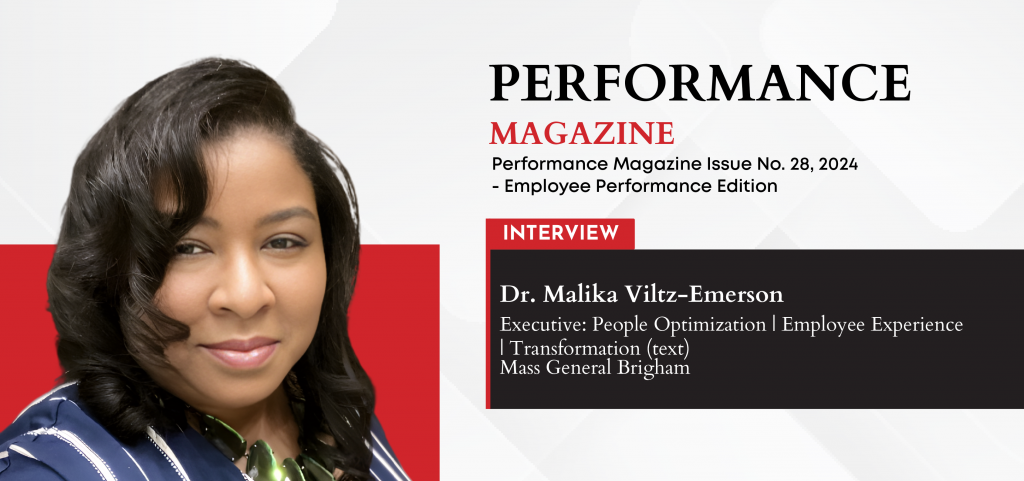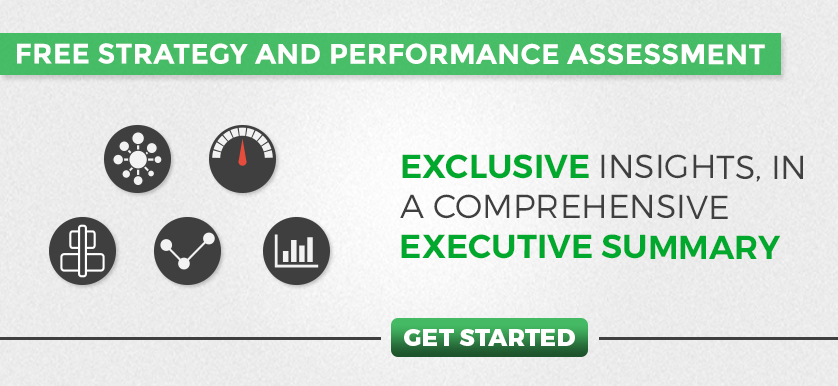Employee-Centric Performance: Giving Your Team the Driver’s Seat

In the past, employee performance management was top-down and one-sided. Nowadays, the paradigm has shifted, giving employees more control over their performance and fostering a culture of collaboration, accountability, and continuous improvement. Dr. Malika Viltz-Emerson, a Senior Global Human Resource Leader, has experienced this firsthand. In this interview, she explores the numerous benefits of involving employees in managing and improving their performance. Let’s delve into the strategies, tools, and best practices that can help organizations shift from traditional performance management approaches to more inclusive, employee-centric models.
Given today’s data-driven business landscape, how should organizations leverage digital tools and data analytics to shape their employee performance management practices, particularly in terms of providing real-time feedback and insights?
The current approach prioritizes collaboration, overall contributions, impact, and outcomes—all of which can be effectively managed and found within a single tool. It is an agile employee growth approach facilitated by continuous feedback and communication tools. There are four common pillars that guide impact identification in specific areas through open manager-employee dialogue, resembling a self-assessment. These are:
- Operational excellence – Enhancing service quality and delivery, fostering innovation, and driving organizational growth while seeking opportunities to become a global strategic advantage
- Culture journey – Finding deep meaning in working together, ensuring growth, diversity, and inclusiveness; working with values such as integrity, respect, and accountability
- Growth and collaboration – Contributing to the growth of others while leveraging and expanding upon their work and ideas
- Individual key accomplishments – The impact that a person has on a project, customer, team, product, or anything that delivers business results
But the major shift is towards data analytics and dashboards for team and company performance, rather than individual assessment.
Could you describe and share some key performance indicators (KPIs) that you’ve utilized to evaluate the performance of your organization’s employees?
The KPIs we use vary depending on organizational priorities, job roles, and specific departmental or organizational goals. There is a set of standard KPIs that focus on culture as a journey, and these include teamwork results, helping others grow, prioritizing the company goals’ impact, and diversity, equity, and inclusion (DEI).
Trends
Per the World Economic Forum’s “Future of Jobs Report 2023“, Large Language Models (LLMs) can already automate about 15% of employees’ tasks, and this might rise to 50% with improved applications. How will these advancements not only affect tasks but also reshape the broader dynamics of employee performance?
These advancements vary across industries. But for most companies, they will allow employees to become more strategic, transform productivity, and reduce the time spent on repeatable manual tasks—ultimately paving the way for getting work done. Although I have some reservations regarding some companies’ usage of LLMs because we know co-pilots grow to become pilots, these reservations ensure we slow down, conduct proper due diligence, and have the right governance in place. The advancements open doors for many people to upskill, allowing people with either no or low coding experience to develop and discover alternative ways to solve problems. It also enhances key soft skills that require human judgment and emotional intelligence.
What role do organizations play in upskilling and reskilling employees in competencies of the future? What does your organization do in this area at the moment?
Providing opportunities for all employees to upskill and reskill should be embedded in an organization’s priorities and goals. Investing in a continuous learning program will help employees adapt to job changes. This program starts with two core competencies: digital acumen and business acumen. The importance of their employees’ data literacy or digital acumen level should be apparent to organizations. Employees need to enhance their familiarity with artificial intelligence (AI) tools to remain competitive. This does not mean they need to learn to be programmers, but as previously discussed, no-code or low-code programming is vital to stay competitive in the future job market.
Adoption is of the utmost importance, making sure that our full-time employees recognize the significance of their contributions and gain a broader understanding of the bigger picture. Embracing the transformations and designing a roadmap that closes the skills gap at every level of our workforce is essential.
Are there any emerging technologies that will significantly influence how organizations manage employee performance in the near future?
Embedding responsible AI is the imminent solution. Let’s face it, that is what we consider emerging technologies nowadays. Moreover, the technology involving data aggregation—i.e., limiting systems to pull data from one data source—should be part of every organization’s near-future plans.
A recent study conducted by Stanford University highlights a disparity in perception, with employees often perceiving higher productivity when working from home, while managers tend to perceive lower productivity levels. Could you provide further insight into the influence of remote work on employee productivity and discuss the differences in these viewpoints?
Having organizations foster all three setups—i.e., remote, on-site, and hybrid—as options is critical to employee experience. However, I believe that if a company promotes a remote work setup, then there should be a quarterly or annual gathering to bring the teams together. I also acknowledge the drawbacks of going fully remote, such as underutilized facilities and the impact on support staff like food vendors, custodians, and security personnel. I will conclude that there is no right or wrong answer to this problem. It should be considered a new way of working and requires future-forward ways of thinking, the same as we do with emerging technologies.
With the rise of the gig economy and freelancing, how are traditional performance evaluation models evolving to accommodate the unique dynamics of temporary and contract workers?
From a performance evaluation dynamic and based on my experience, it is based on a scorecard whose criteria are based on the KPIs that the organization sets. While we use a significant amount of temporary and contract workers, we are only evaluating their performance based on the specific task or project they were contracted to support.
Read More >> The Employee Performance Management Playbook: Aligning Goals, KPIs, and Growth
Strategy and Performance Management Practices
How is employee performance defined and evaluated in your organization? Can you discuss your organization’s performance criteria, rating levels, and frequency of performance reviews?
For us, it is not overly complicated. It is simplified by having the employees drive most of the process. It is about having rich conversations that optimize impact and get employees to do their best work. The frequency can be two to four times per year and is set by individual senior leaders. But there are at least two tracked conversations, not reviews. The employee outlines these conversations and focuses on areas like the growth of others, building on ideas, and contributions to the team, business, or customer.
How can organizations move from the traditional approach of annual performance appraisals to self-regulated teams and a strong feedback culture?
Stop thinking traditionally. Instead, bring in the right talent to help you foster a forward-thinking and growth mindset. Employees are not fans of performance reviews or 360-degree feedback, which breaks from the norm. Make it a conversation, a way to connect with the employees and teams. A standard set of core priorities puts the employee in the driver’s seat. Identify barriers to support the employee and have them do the same, enabling them to reflect and understand the impact of the work. Performance tools are for tracking the conversations, reviewing the total rewards outcomes and snapshots, and soliciting peer impact.
What can organizations do to engage more actively the employees in the individual performance management process, so that it is no longer regarded as solely an HR process?
To accomplish this, establish a culture that puts the employee in the driver’s seat, gives them accountability, and guides them to take ownership, including self-assessment, peer input, and aligning rewards with outcomes. Ensure regular manager check-ins and early sharing of insights. There should be no surprises for employees when discussing their performance.
Performance is also linked to learning, so having learning paths identified for both the employees and managers early in the process is crucial. The learning for employees would be tied to their core competencies and additional skills, and for the manager, on how to be a coach in the performance process.
How does your organization ensure alignment between employees’ objectives and corporate strategy?
We create deliberate listening mechanisms through which we better understand the needs and do some breakthrough thinking together.
What factors are critical to the success of a modern employee performance management system?
A modern system would be something that helps promote the company culture, continuous improvement, employee well-being, and ongoing development. But that’s more about the processes around the system. The tool itself would enable communication, tracking of capabilities, and identifying core competencies, opportunities, learning, and feedback. It should also give the employee a voice and put them in the driver’s seat. I did not speak about compliance, data privacy, and security—to me, those are obvious in any system, especially performance.
**********
Editor’s Note: This article was originally published in Performance Magazine Issue No. 28, 2024 – Employee Performance Edition.
Erratum: The previous version of this article mentioned “365-degree feedback”. It has since been corrected to “360-degree feedback”.
About the Practitioner: Dr. Malika Viltz-Emerson has over 20 years of experience in human capital management. Her mission is to identify and address the real-world challenges and opportunities for employees and the company, and design and implement optimal solutions that leverage the latest tools, technologies, and processes.

Tags: employee performance management, employee-centric performance




